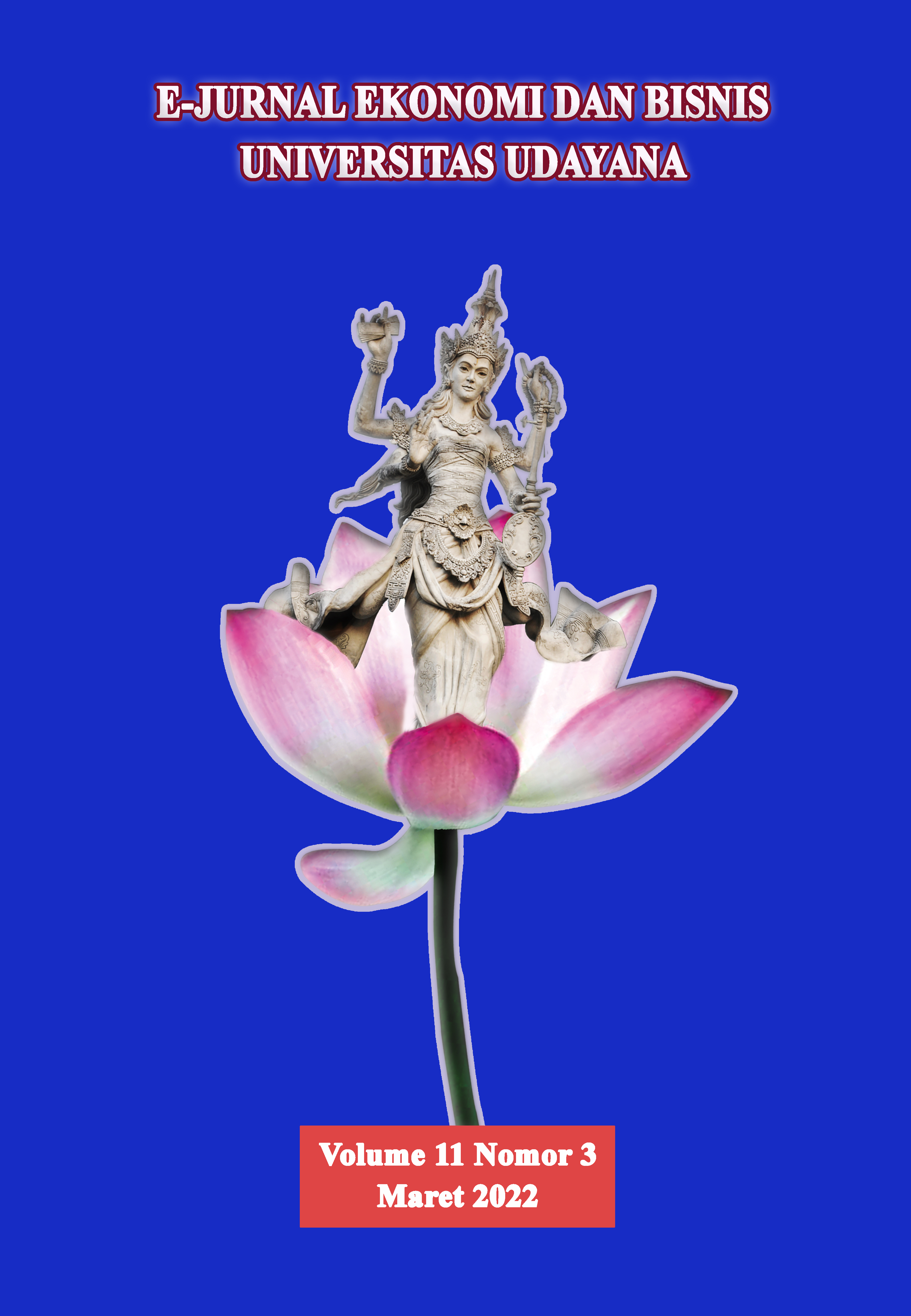PENGARUH PENDAPATAN PER KAPITA, PERTUMBUHAN UMKM DAN TINGKAT PENGANGGURAN TERHADAP TINGKAT KEMISKINAN DI PROVINSI BALI
Abstract
The population problem that is currently an obstacle and challenge for the Indonesian government is the problem related to the high level of poverty and the unemployment rate that occurs. Poverty and unemployment require comprehensive handling in an adequate regional scale. This study aims to: 1) analyze the simultaneous effect of per capita income, MSME growth and unemployment rate on the poverty rate in Bali Province; 2) analyze the partial effect of per capita income, the growth of MSMEs and the poverty rate in Bali Province. This study uses time series data, which is between 2010-2019. The type of data used is quantitative and qualitative data. The data used are data obtained from the Central Statistics Agency for the Province of Bali and the Central Statistics Agency in the Regency/City of the Province of Bali. The data were processed using multiple linear regression analysis techniques. The results of the research analysis show that: 1) Per capita income, MSME growth and the unemployment rate simultaneously have a significant effect on the poverty level in the Province of Bali; 2) Income per capita and MSME growth partially have a significant negative effect on the poverty level in Bali Province and the unemployment rate partially has a significant positive effect on the poverty level in Bali Province.


















